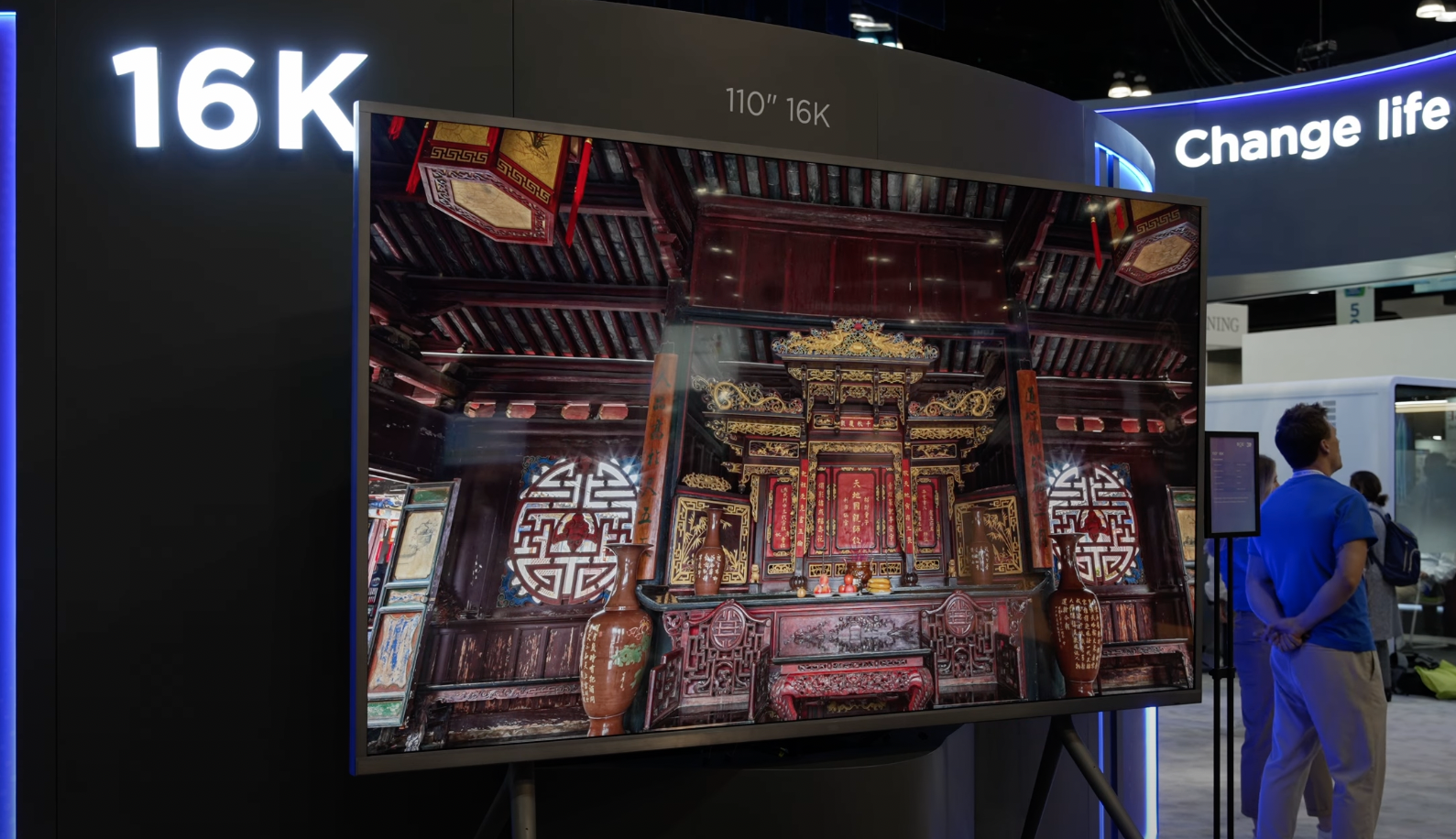
16 times as many pixels as 4K. Damn.
When it comes to PC gaming, there’s still a reasonable debate to be had over the merits of 4K versus ye olde 1440p. But forget all that because the world’s first 110-inch 16K TV has now been revealed.
For now, it’s a prototype item rather than something you can actually buy. The actual resolution is 15,360 x 8,640 pixels. And that means this monster is essentially four 8K pixel grids jammed together, or sixteen 4K displays. Or a ridiculous 64 1080p panels, if you want to get really silly.
To put another very big number on it, we’re talking no fewer than 132,710,400 individual pixels. Of course, each pixel is made up of red, green and blue subpixels. So, that’s 398,131,200 individually addressable subpixels. Stick that in your Cleartype font-smoothing algorithm and process it!
Of course, a display like this immediately throws up all manner of whys and hows. As detailed by HDTV Test’s Vincent Teoh, the screen is being shown off at the Display Week 2023 show in LA.
It comes to us from BOE, a major TV and monitor panel maker that makes just the screens, rather than fully finished products you can buy. Some specs were detailed, at the show too. It’s an LCD panel good for 400 nits, a contrast ratio of 1,200:1 and 99 coverage of the DCI-P3 gamut. All of which implies that it’s a monster IPS-type panel.
It also runs at just 60Hz, which isn’t a huge surprise given the ridiculous bandwidth requirements involved. Speaking of which, Teoh says the display was actually running 8K content upscaled to 16K.
That highlights one obvious and immediate problem, the lack of 16K content. There are no true 16K cameras for capturing content that we are aware of. What’s more, driving a display at 16K is a major problem.
(Image credit: Future)
Best gaming monitor: Pixel-perfect panels for your PC
Best high refresh rate monitor: Screaming quick screens
Best 4K monitor for gaming: When only high-res will do
Best 4K TV for gaming: Big-screen 4K PC gaming
As it happens, the one device that’s capable of it is the PC. The DisplayPort 2.0 standard has support for 16K at 30-bit-per-pixel 4:4:4 with a refresh rate of 60Hz using DSC video compression.
So, you could, in theory, drive this thing natively with an AMD Radeon RX 7900 XT or XTX, which both support DisplayPort 2.1. But for gaming you’d be looking at 16 times the GPU load of 4K. And that will do unspeakable things to any current GPU.
In the end, this is all a bit of a distraction. Like we said at the outset, in a world where 4K is hardly a no brainer for PC gaming and Nvidia just launched the $400 RTX 4060 Ti aimed at 1080p gameplay, a display panel that generates 64 times the graphics load of 1080p and 16 times that of 4K isn’t hugely relevant.
Put it this way: it’s going to take a bit more than flicking the DLSS switch with frame gen to make 16K playable. But one day, who knows. 4K and its eight million pixels was unthinkable back when gaming was played at 1024 x 768p pixels on a big, fat goldfish bowl CRT monitors. So as hard as it is to imagine right now, eventually 16K gaming will presumably be a thing.



